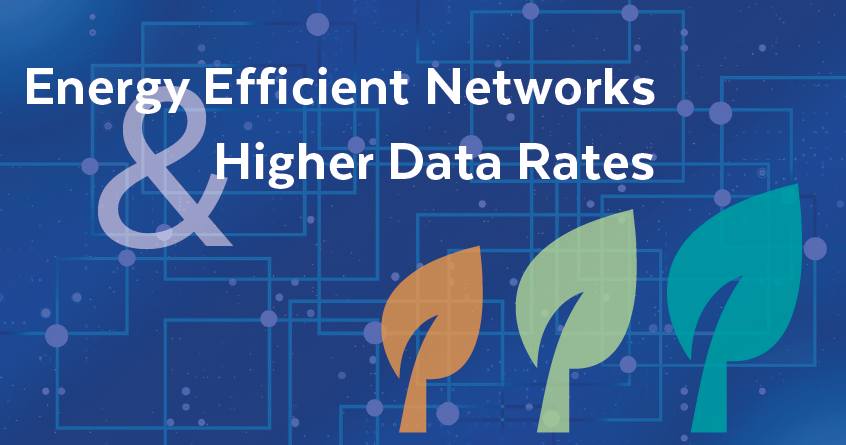Power over Ethernet (PoE) technology has transformed how network devices are powered and connected. With organizations and industries relying more heavily on data-driven operations, the demand for faster data rates is increasing. Beyond their role in accelerating data exchange, these elevated rates have the power to significantly enhance energy efficiency. We must look into the correlation between higher data rates and energy efficiency to understand how higher data rates can lead to energy efficient PoE networks.
Energy Higher Data Rates Reduce Transmission Time
As businesses and industries become increasingly data-driven, the demand for quicker data transmission has become a defining factor in network technology. Higher data rates on a PoE network are the key to faster data exchange and energy efficient networks.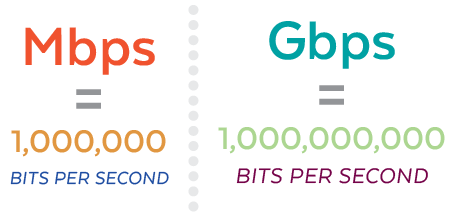
Data rates, measured in megabits per second (Mbps) or gigabits per second (Gbps), determine the speed at which data is transmitted over a network.
- Mbps signifies a million bits transmitted per second,
- Gbps denotes a billion bits per second.
By increasing data rates, transmission times are reduced, leading to quicker data delivery.
The correlation between higher data rates and energy efficiency becomes evident when examining the lifecycle of network devices. In a typical operation, devices remain active while data is transmitted. This active state consumes energy, contributing to the overall power consumption of the network. The faster data is transmitted, the less time network devices need to remain active, reducing energy consumption during transmission.
Transmitting More Data Simultaneously
Just like a traditional highway can accommodate a limited number of cars at a time, only a finite amount of data can be exchanged within a given timeframe. However, by enabling devices to transmit more data simultaneously, we effectively widen the data highway, reducing congestion and accelerating the overall data exchange process.
Multiple data streams allow devices to share larger volumes of data in parallel. This minimizes the need for prolonged communication sessions and optimizes the duration devices spend in active mode, consequently reducing energy consumption.
Time-Division Multiplexing (TDM)
Time-Division Multiplexing is a technique that enables multiple data streams to share a single communication channel by allocating specific time slots to each stream. Due to this configuration, data can be delivered sequentially from many sources without interference or collision. TDM is like a choreographed dance, where each performer has an allocated time to showcase their talents on a shared stage.
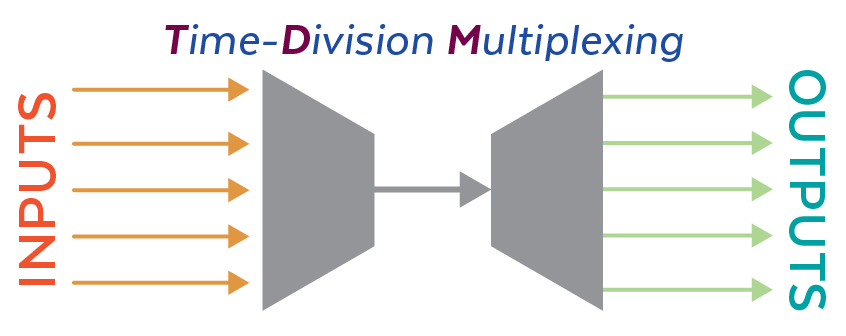 How TDM Works
How TDM Works
Time Slot Allocation
Each data stream is assigned a specific time slot, ensuring data is transmitted sequentially. For example, if there are four data streams, the communication channel is divided into four time slots, one for each stream. By adhering to these allocated time slots, data streams avoid clashes, resulting in smooth and uninterrupted data transmission.
Synchronized Clocks
To execute TDM effectively, all devices participating in the process must be synchronized to a common clock signal. This synchronization ensures that each device knows when its designated time slot begins and ends.
Data Reconstruction
On the receiving end, the data streams are separated based on their respective time slots. Because of the synchronized clocks, the receiver knows which data belongs to which stream. The data from different streams is then reconstructed into its original form.
Advanced-Data Compression
Advanced-Data Compression is a powerful technique that allows us to send and store more data with minimal impact on resources. This method improves energy efficiency by reducing the amount of data transmitted. Compression algorithms identify and eliminate redundant or unnecessary information before transmission, effectively sending fewer bits across the network.
What is Data Compression?
Data compression is the process of encoding and restructuring data into a more compact form while preserving its essential content. This reduces the number of data packets transmitted, leading to faster transmission times and lower energy consumption.
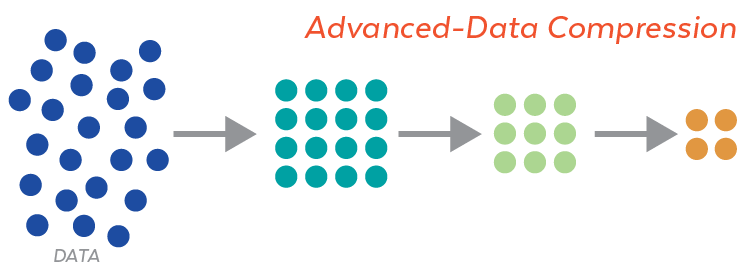
Other Ways to Achieve PoE Energy Efficient Networks
While higher data rates and advanced data compression play pivotal roles, they are not the only avenues to efficiency. Improvements such as optimized power management, device design, and integration with renewable energy sources elevate PoE efficiency.
Optimized Power Management
Optimized power management orchestrates the balance between power supply, consumption, and conservation to enhance energy efficiency further. Optimized power management techniques involve adjusting power delivery based on the actual data transmission needs of the connected device.
Voltage Drop Compensation
PoE systems can experience voltage drops over long cable lengths, leading to inefficient power delivery. Voltage drop compensation mechanisms maintain a consistent voltage level throughout the network, ensuring devices operate efficiently without drawing excess power due to voltage fluctuations.
Reduced Standby Power
Inactive devices often draw standby power, contributing to unnecessary energy consumption. Implementing intelligent standby modes reduces the power consumed by devices during periods of inactivity.
Enhanced Power Scheduling
Coordination is critical to energy efficiency. Devices can communicate and synchronize their power requirements, optimizing energy consumption by avoiding unnecessary power peaks and simultaneous high-power demands.
Renewable Energy Integration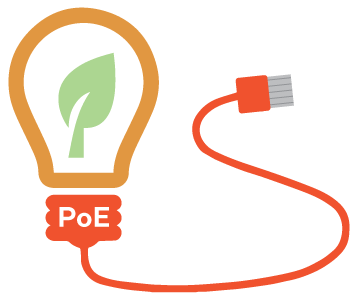
Renewable energy integration in Power over Ethernet (PoE) has revolutionized how networks are powered by merging traditional connectivity with sustainable practices. By harmonizing PoE technology with renewable sources such as solar power, businesses can harness clean energy to fuel network devices, reducing reliance on conventional power grids and minimizing environmental impact. This integration enhances energy efficiency and propels PoE towards a more eco-friendly and sustainable future.
Smart Network Monitoring and Management
Intelligent network monitoring and management in PoE introduce a realm of data-driven optimization, where real-time insights become the guiding force. By employing advanced monitoring tools and algorithms, administrators gain the ability to oversee energy consumption patterns, device performance, and potential inefficiencies. Armed with this intelligence, informed decisions can be made to allocate power, fine-tune operations, and ensure the network operates efficiently and dynamically. This proactive approach enhances energy conservation and elevates network responsiveness, contributing to a resilient and adaptable network ecosystem.
Explore the Future of Energy Efficient PoE Networks
As the demand for higher data rates continues to grow in the Power over Ethernet technology world, the impact on energy efficiency cannot be ignored. From reducing transmission times through higher data rates to implementing innovative techniques such as TDM and data compression, numerous strategies exist to optimize power management and decrease energy consumption.
Versa Technology is a leading provider of networking technology and PoE products. Contact us today to explore the latest advancements in Power over Ethernet technology that can enhance the energy efficiency of your network infrastructure.

